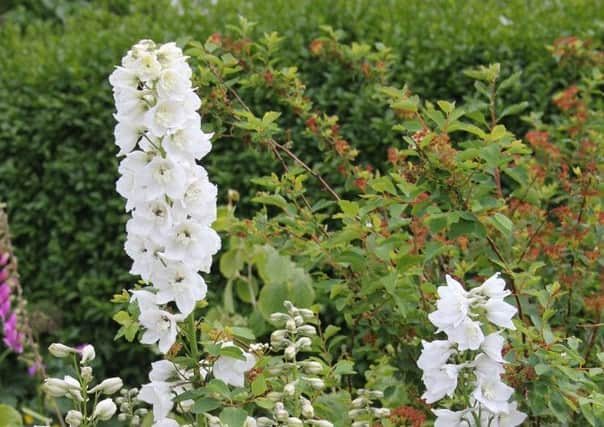Don't shut the stable door after the horse has bolted, act now


Many of the plants we grow – fruits, vegetables and ornamentals – literally need our support if they are to be successful, and this is the time for action.
As we settle into a steady weather pattern in terms of daily temperature, plant development will even step up apace.
Advertisement
Hide AdAdvertisement
Hide AdThe more rapid the stem growth, the softer the cellular tissue in the short term, and this leaves the whole organism vulnerable to destructive winds. Once an unsupported plant has been flattened, no matter how much you try to restore equilibrium, you never quite regain that natural appearance. It’s akin to closing the stable door after the horse has bolted.
The only downside in getting supports in place before growth begins is the slightly obtrusive appearance of any structure, natural or manufactured. But that need only be for a limited period. If the process has been executed well, any support will practically vanish under stems and leaves as natural growth weaves through.
The ideal outcome is healthy foliage topped with flowers and not a hint of metal, cane, twig or string.
If this is to happen, a little knowledge of plant growth, height and spread is useful.
Advertisement
Hide AdAdvertisement
Hide AdSome taller types are capable of standing firm themselves. Verbascum, foxglove, dispsacum and globe artichoke spring immediately to mind, but many plants do not enjoy the luxury of a rapid secondary thickening of stems and need help to stand tall.
Delphiniums are typical of this. A group in our border has already made over 30cm of soft growth and has just been caught in time.
If there’s a label in place or you can identify herbaceous plants as shoots emerge, there’s a good indication of the height supports need to be, but there can be occasions where a guesstimate is required.
Last week, whilst working alongside volunteers weaving birch branch supports for mixed border perennials, a query arose. “How tall do these plants grow?” The label beside them declared Phlox, but the leaves were the wrong shape, too large, too fleshy and greyish, rather than green. There were also embryo flower buds that clearly indicated centranthus plants, commonly called valerian, with a normal growing height of well under a metre.
Advertisement
Hide AdAdvertisement
Hide AdMisleading though the label had been, this occasionally happens in gardens open to the public. An enthusiastic visitor searches for an informative label at the height of summer growth, then replaces it in good faith, but not necessarily in the same spot.